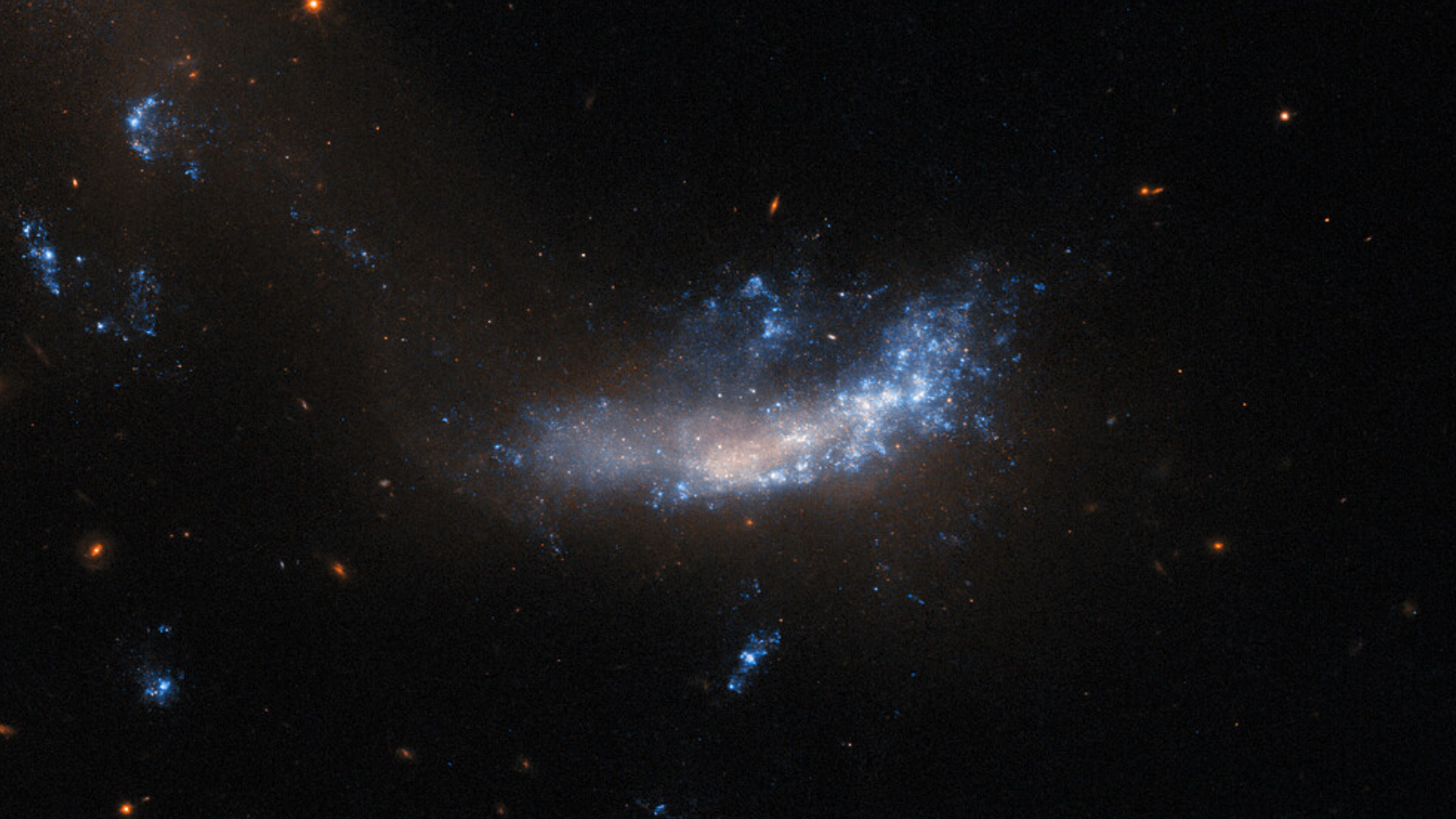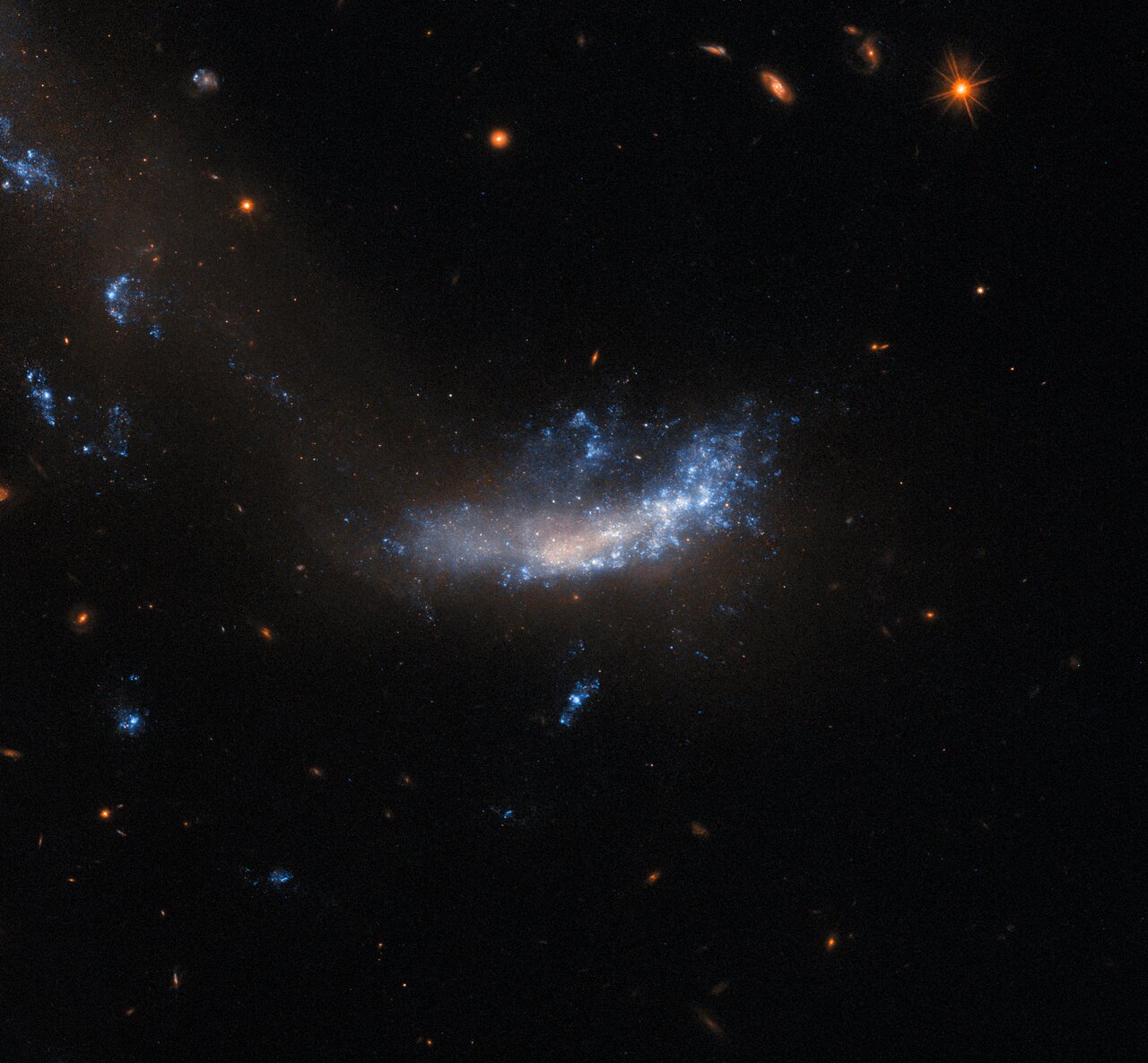Hubble Telescope reveals galaxy that hosted a supernova 2.5 billion times brighter than the sun (photo)
The long-serving space telescope observed the supernova in a galaxy 150 million light-years away which released 2.5 billion times more energy than the sun.

A new Hubble Space Telescope image shows the tiny galaxy UGC 5189A, located about 150 million light-years away in the constellation Leo, in stunning detail.
The space telescope, which has been observing the universe in infrared since 1990, has been studying this galaxy since 2010, with scientists using this investigation to learn more about a supernova that occurred in this galaxy over 150 million years ago.
Over just three years, this supernova called SN 2010jl emitted at least 2.5 billion times more visible energy than the sun released over the same timeframe across all wavelengths.
Related: Hubble Telescope finds surprising source of brightest fast radio burst ever
SN 2010jl is a Type II supernova meaning that it marks the death of a massive star that, during its life, would have had a mass of at least 40 to 50 times that of the sun, Hubble officials wrote in an image description. These explosions occur when these massive stars have run out of the fuel for nuclear fusion, and the energy that for millions or billions of years supports them against the inward push of gravity ceases.
While studying supernovas themselves is of immense value to scientists, examining the wreckage that these cosmic explosions leave behind can be equally fruitful. For example, studying the environments around detonated stars can show the conditions needed to drive a supernova and how that supernova changes its surroundings.
This interest means Hubble has found itself directed at UGC 5189A many times. This new picture is created from data collected during the long-serving space telescope's last three observation periods of the distant galaxy, which is just 36,000 light-years across, making it diminutive compared to our 100,000 light-year-wide galaxy, the Milky Way.
Breaking space news, the latest updates on rocket launches, skywatching events and more!
The image shows UGC 5189A as a flat, somewhat misshapen disk with a warped upward curve.
The right-hand side of the galaxy is marked by "blue fizz" that represents plumes of bright gas and dust. The left side of UGC 5189A is less dramatic and striking, slightly dimmer with patchier coverings of gas and dust.
Outside the main bright disk of the galaxy, a dark coffee-colored trail of gas underlines UGC 5189A and leads up away to the top left-hand corner of the image.
While the background of the galaxy is mostly dark, a few small galaxies can be seen punctuating the inky blackness, and one star is clearly visible in the top right-hand corner of the Hubble image.
Hubble hasn't just been studying UGC 5189A to zoom in on supernova wreckage. The space telescope has also examined several other supernova-hosting galaxies located around 1,000 million light-years away that saw stellar explosions in their recent pasts, at least as we see them.

Robert Lea is a science journalist in the U.K. whose articles have been published in Physics World, New Scientist, Astronomy Magazine, All About Space, Newsweek and ZME Science. He also writes about science communication for Elsevier and the European Journal of Physics. Rob holds a bachelor of science degree in physics and astronomy from the U.K.’s Open University. Follow him on Twitter @sciencef1rst.

